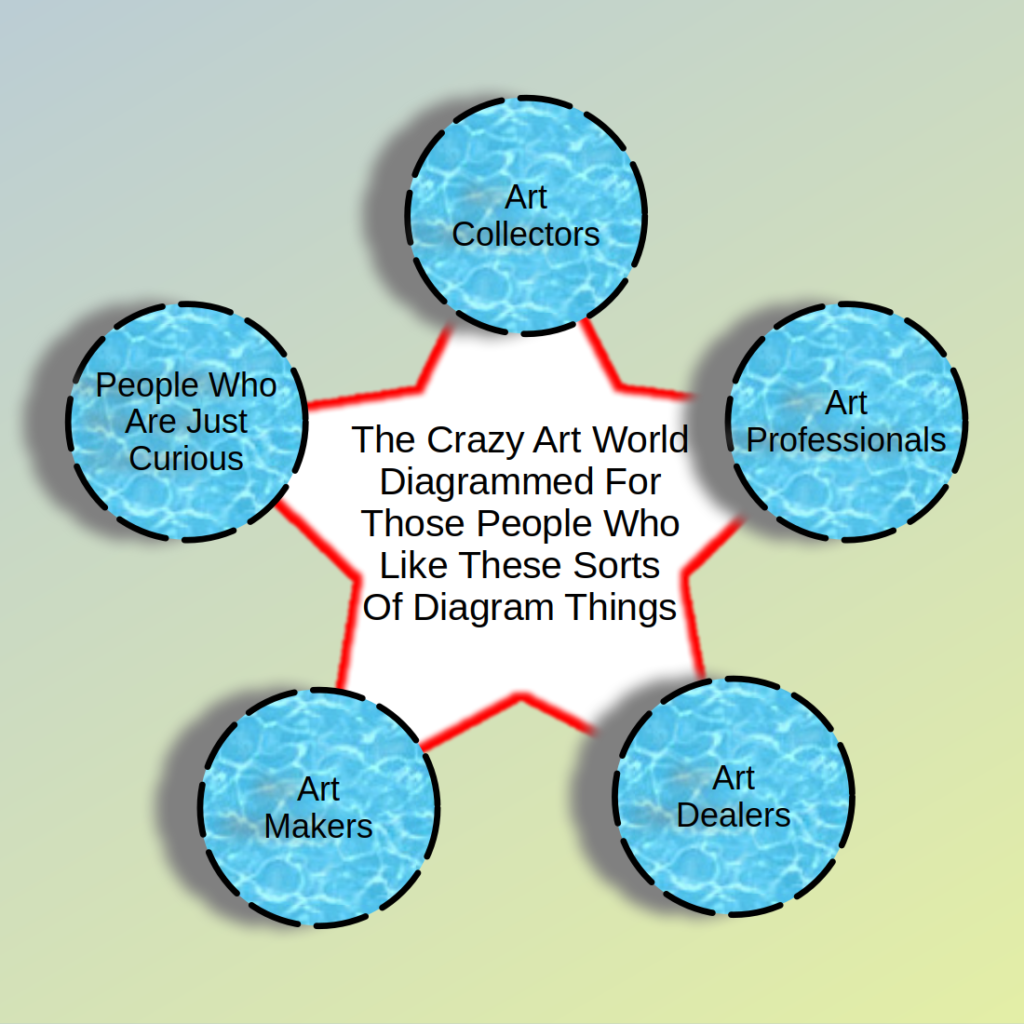
Interviewer: Would you explain why you added [some odd thing] to this work?
Artist: Yeah that is rather strange. I don’t really know.
Interviewer: What do you mean you don’t know? You made it didn’t you?
Artist: Well yeah but I really don’t know what it means.
Interviewer: That makes no sense at all. How do you make something and not know why you made it?
Artist: Well I was making something and it just happened. I put some other stuff in too but I took that out.
Interviewer: Why did you take it out?
Artist: I didn’t want to look foolish.
Interviewer: Would you say your work is influenced by the writings of Baudrillard, Lyotard, Derrida, or perhaps Foucault?
Artist: I’m not sure. Hmmm, I would probably say definitely maybe.
Interviewer: Thank you for your elucidating interview.
Artist: My pleasure.


